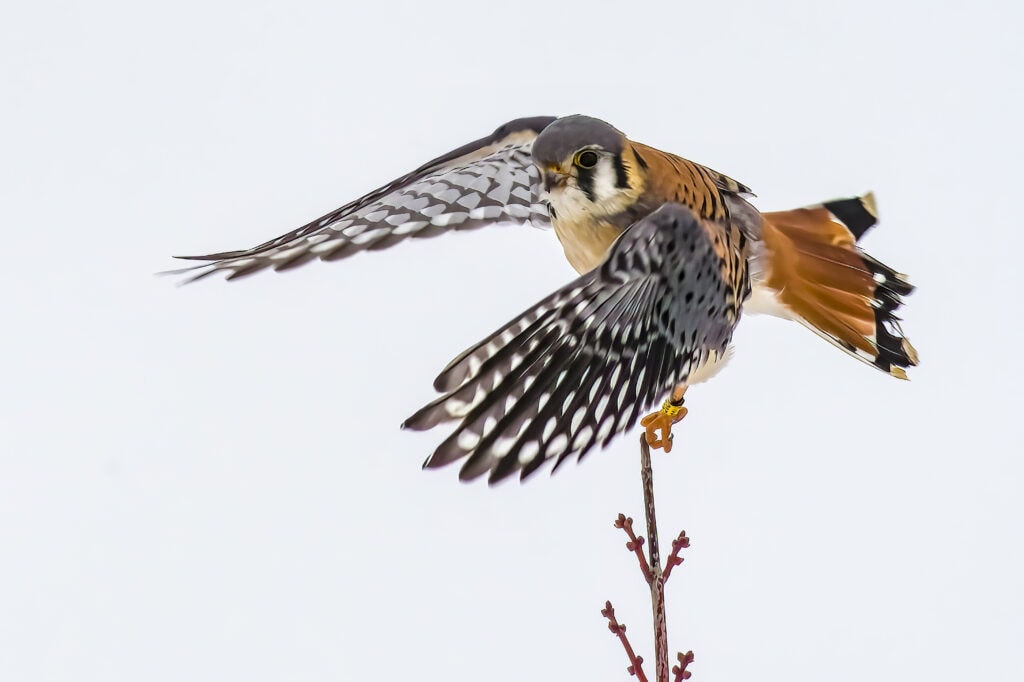American Kestrels are unique and charming amongst birds. The smallest of North America’s falcons, these raptors contain the fierce majesty of a bird of prey within a svelte songbird-sized package. In much of the country, they are common fencepost raptors, often observed perched atop posts and telephone poles, watching for a juicy insect to pass by. The history of mankind and kestrels dates at least as far back as the Middle Ages, when manuscripts describe their usage in falconry. The involvement of kestrels with this tradition is likely much much older.
Related Article: Pennsylvania Game Commission Investigates Fearlessness in Wild Grouse
This is just one reason why the decline of the American Kestrel is so very troubling. American Kestrels are common. Their numbers are high enough that they are not considered unstable by the standards of the Endangered Species Act. This is a good thing, in theory, but it places them in a unique position that is becoming increasingly commonplace for supposedly “stable” birds. Despite being considered as being of low conservation concern, the American Kestrel is declining and has been declining since the 1970s.
In the last few years, I’ve written quite a bit about the DDT crisis while covering conservation stories for other raptors. The fascinating thing about DDT is that when it was banned and dedicated conservation efforts began for the most terribly impacted birds, those efforts largely bore fruit. The Peregrine Falcon, for example, was rescued from the brink of extinction within the United States. What’s perplexing is the fact that, while many other raptors have recovered since the DDT crisis, American Kestrels have declined by almost half. Unsettlingly, nobody quite knows why.
Since 1970, America has lost as many as 2 million kestrels. The decline has been steady and largely unchecked, meaning that it has not plateaued or stabilized. Should this pattern continue, this “common” raptor is headed for extinction.
A study by the University of North Texas is underway to try and understand the potential causes for this decline. Currently, researchers believe that urbanization may be reducing American Kestrel habitats to such an extent that their populations are unable to sustain themselves. To determine whether this is the case, scientists are trapping kestrels and fitting them with tracking equipment so that their movements can be monitored.
This data, along with data from so-called “citizen scientists,” birders who share and report sightings to further avian conservation, may provide key information that could help prevent this species from losing its “common” status.
Because American Kestrels are cavity nesters, some conservation groups and concerned wildlife fans have been placing man-made nesting boxes to encourage kestrels to reproduce. Like bluebirds and purple martins, a lack of available real estate can be disastrous for nesting kestrels who may benefit from man-made nesting boxes instead.
While conservation efforts and research projects are underway, we are a ways off from understanding why the American Kestrel, and several other “common” birds, are facing such steep decline. What we do know is that it is vital that conservation begins now, while there are plenty of kestrels to observe, study, and protect. The work that is done today may ensure that future generations have the same privilege.
Popular Article: St. Petersburg Changing Pest Management Strategy to Reduce Owl Deaths

